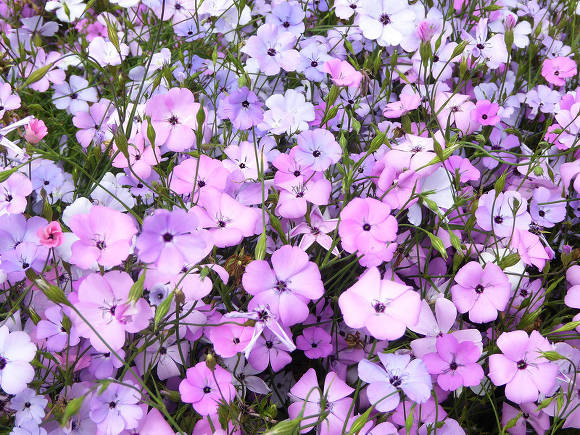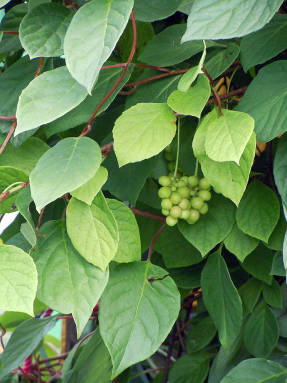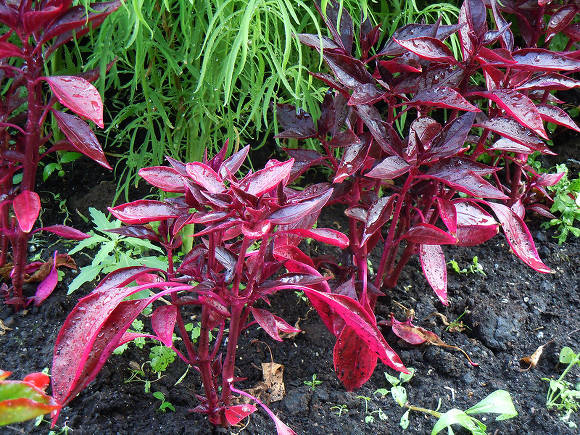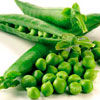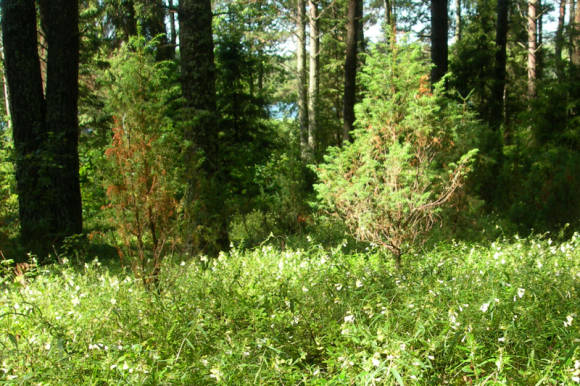Amur velvet, or Amur cork tree (Phellodendron amurense) It is known for its soft, elastic, velvety light gray or brownish gray cork bark, which reaches 7 cm in thickness. The bast of the wood is a thin layer of yellowish-golden color. It was used earlier to obtain a yellow dye for dyeing fabrics and thin leathers. It is the bast, not the bark, that is of value for medicinal use.
 |  |
Pharmacological action and papplication
Bast, leaves and fruits of Amur velvet are used for medicinal purposes.
Plant preparations are used as a choleretic agent for chronic hepatitis, cholecystitis, hepatocholecystitis, cholelithiasis. It is known about the use of drugs obtained from this tree, as tonic, antiseptic, antipyretic and hemostatic agents.
Phytoncides of leaves have antimicrobial properties, essential oil - anthelmintic, antimicrobial, anti-putrefactive properties. Bast and leaves of Amur velvet are used in oriental medicine to improve appetite and digestion, for kidney disease, pneumonia, flu and tonsillitis, bone tuberculosis, helminthiasis, bacterial and amoebic dysentery and other infectious diseases. A decoction of Amur velvet leaves is used to increase appetite and improve digestion, as a hemostatic agent for hemorrhoidal bleeding. Fellavin present in the leaves is active against the herpes virus.
 |
Amur velvet fruits are used as an anthelmintic agent, treat diseases of the gastrointestinal tract and oral cavity.
Eating 2-3 fresh berries daily is considered beneficial for diabetes. In folk medicine, velvet fruits are also used to prevent and treat colds and flu, with high blood pressure and to normalize metabolism. Berries are taken on an empty stomach without drinking. Due to the high content of active substances, you should not take more than 5 berries at a time. During the treatment with the fruits of velvet, you should also refrain from smoking, as well as from drinking alcohol, strong tea or coffee. The Nanais use the fruit of velvet as an anthelmintic agent.
 |  |
Velvet bast has analgesic, antimicrobial, anti-inflammatory, hemostatic, wound healing, tonic, expectorant properties. Velvet bast tincture also exhibits anti-cancer and antifungal properties. Bast decoction is used to treat a number of inflammatory diseases and metabolic disorders.
Outwardly, a decoction of bast is used for various skin and eye diseases, for burns and bruises, in the treatment of surgical wounds and fungal skin lesions.
In a number of foreign countries, velvet bast is used as a raw material for obtaining berberine, and
The flavonoid preparation Flacoside with antiviral properties is obtained from velvet leaves.
Berberine has a multifaceted effect on the body: it lowers blood pressure, slows down cardiac activity, causes contractions of the muscles of the uterus, after initial arousal, it inhibits the respiratory center, and increases the secretion of bile.
In Chinese medicine, velvet has been widely used and is used for various diseases as an antipyretic, antiseptic, hemostatic, tonic; for the treatment of infectious jaundice, asthenia, dysentery, dyspepsia, filariasis, elephantiosis; in Tibetan medicine - for diseases of the kidneys, eyes, respiratory infections, typhoid, hepatitis, diseases of the lymph nodes, polyatritis, allergies, dermatitis.
 |
The peoples of the Far East and the Amur Region use velvet in the form of decoctions and infusions of leaves and flowers.Decoctions of fruits and bark - for pneumonia, pleurisy, pulmonary tuberculosis, diabetes, as an astringent, diuretic, antipyretic, anti-inflammatory, antiseptic, anthelmintic (antihelminthic), deodorizing agent. Outwardly, a decoction of bark and bast is used for various skin diseases. Tincture of fruits - for dysentery, diseases of the stomach, oral cavity. A decoction of the bark of young plants is used for nephritis and leprosy.
In experiments on animals, preparations of Amur Velvet reduced blood pressure, increased resistance to tumors, hematomas, sarcomas, and exhibited fungicidal activity.
Amur velvet is an excellent honey plant, its honey productivity reaches 200-250 kg / ha. Honey collected from Amur velvet is of excellent quality and has anti-tuberculosis effect.
General contraindications:
- you should not take more than 5 Amur velvet berries, since these fruits contain substances that, in large doses, can be harmful (in small doses, on the contrary, they have a healing effect);
- you should not drink alcoholic beverages, strong tea and coffee, or smoke at the same time as taking preparations from velvet or parts of its plant;
- Amur velvet fruits can cause an allergic reaction;
- contraindicated in young children and pregnant women.
Cosmetic application
Amur velvet extract is used to strengthen and moisturize the skin. In addition, it stimulates collagen synthesis, promotes gentle skin cleansing, and protects the skin from harmful influences and infections. In Nanai folk medicine, freshly cut bast of Amur velvet is used to treat dermatitis and chronic dermatomycosis, and velvet fruits are used in the form of an ointment with vegetable fat or lard for various dermatitis, dermatomycosis, for fractures, burns, frostbite. In China, for some forms of eczema, ointments and powders made from Amur velvet are successfully used.
Application recipes
For fungal diseases of the upper respiratory tract take 1 tbsp. crushed dried leaves of Amur velvet, pour 200 ml of boiling water, insist in a thermos for 3-4 hours, take 0.3 cups 3 times a day. The course of treatment is 30-40 days.
With eczema of the outer ear brew 2 tbsp. Amur velvet 1 cup boiling water, leave for 2 hours, use externally.
When treating sore throat use a decoction of the plant: 1 tsp. boil chopped bast with 200 ml of water for 15 minutes. This amount of broth is drunk in 3 doses during the day.
Positive result in the treatment of neurodermatitis the use of Amur velvet leaves: pour 6 g of leaves with 1 glass of hot water, boil in a sealed enamel container in a water bath for 15 minutes, cool at room temperature, strain through 2-3 layers of gauze and bring the volume of boiled water to the original. Take 1 tbsp. 3 times a day after meals. typhoid, hepatitis, lymph node diseases, polyatritis, allergies, dermatitis.
For cooking infusiontake 20 g of leaves and flowers, pour 200 ml of boiling water, insist on a water bath for 15 minutes, cool for 45 minutes, filter. Take 1/3 cup at the reception 3-4 times a day after meals.
For decoctiontake 15 g of fruit or bark, pour 200 ml of boiling water, insist on the bath for 30 minutes, cool for 10 minutes, filter. Take 2 tbsp. tablespoons 3-4 times a day after meals.
 |
Growing Amur Velvet
Amur velvet reproduces well by seeds and gives abundant self-seeding. The problem when growing from seeds is the first wintering of seedlings. The seedlings that survived the first winter grow normally and practically do not require maintenance. Sowing should be carried out before winter with shallow seeding. Seedlings will appear rather late - at the end of May, beginning of June. By autumn, they will reach a height of 6-10 cm, for the winter they need to be covered with dry leaves. By 4-5 years of cultivation, the trees will reach a height of 1 meter and begin to grow faster. Flowering and fruiting occurs in the 8-10th year.
Photo by the author



